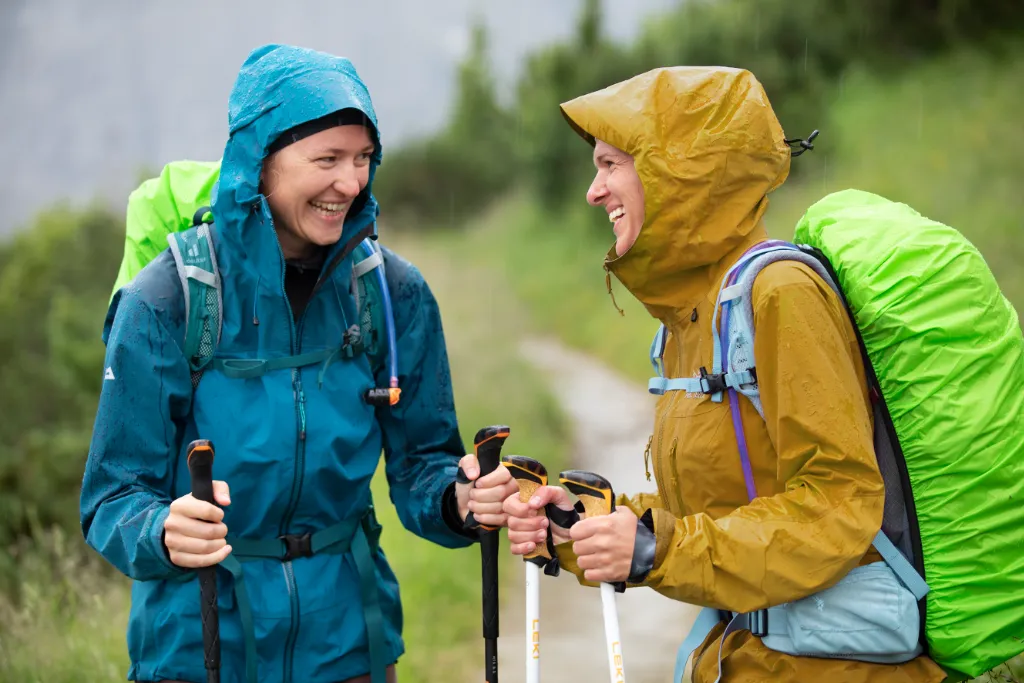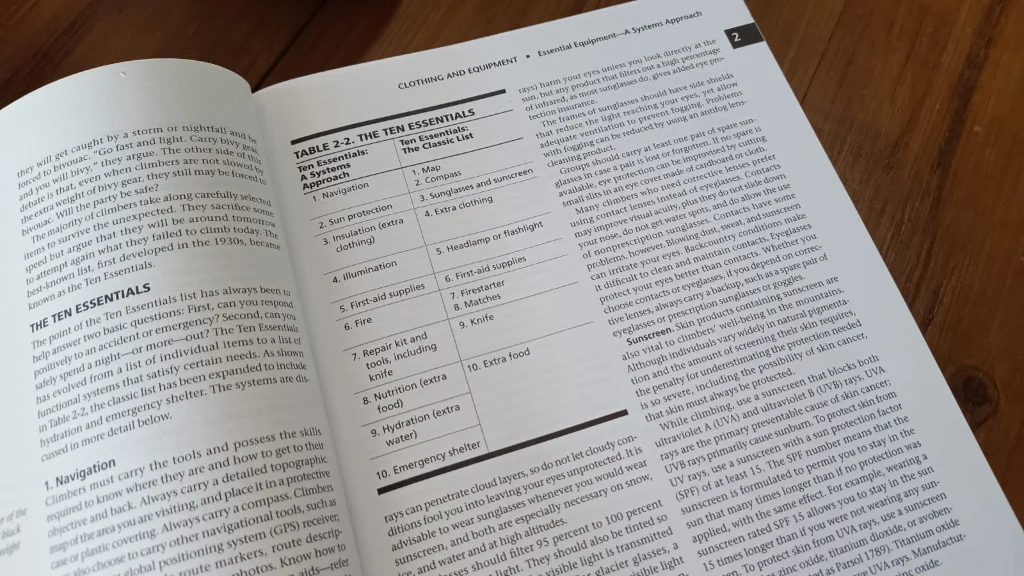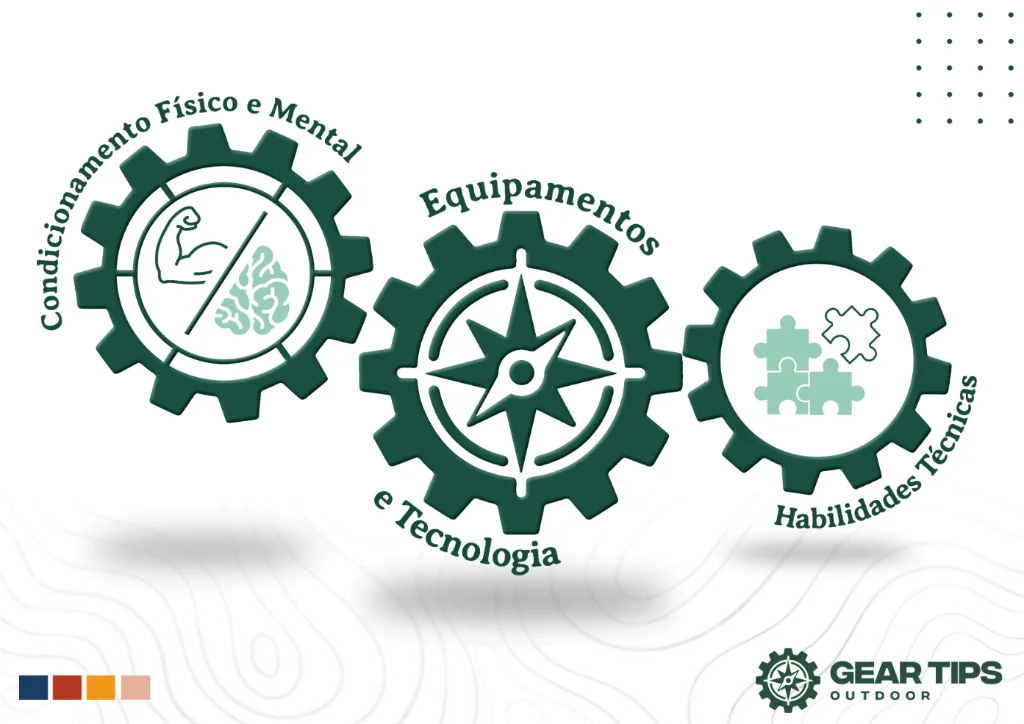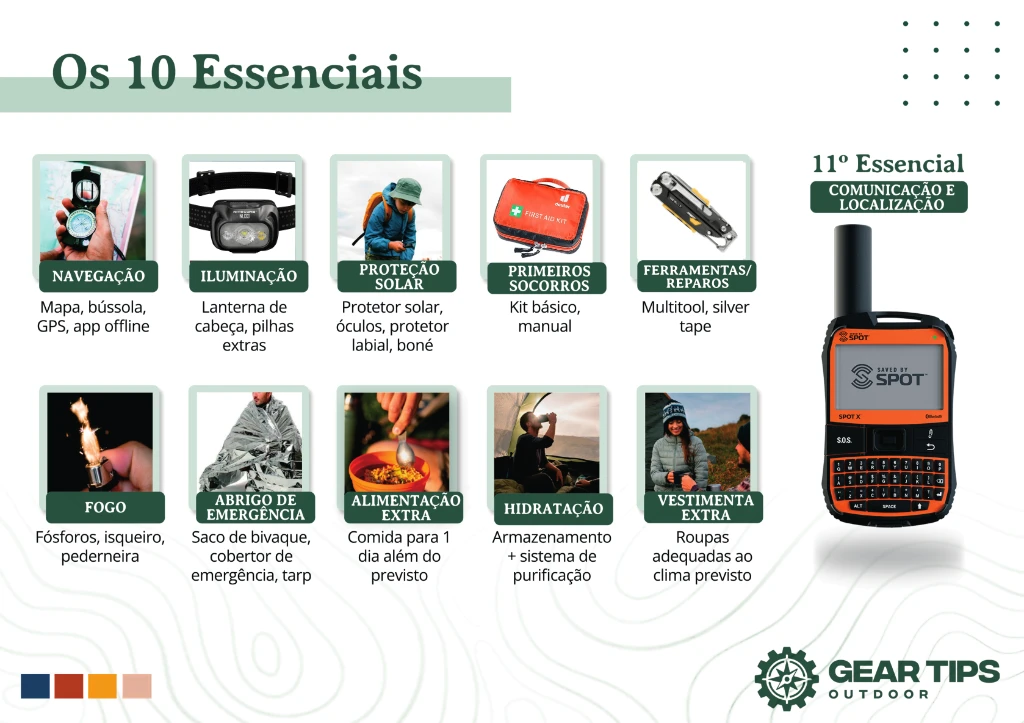When we prepare for an outdoor activity — whether it’s a day hike, an overnight trek, or a more technical expedition (with more than two nights) — we carry more than just a backpack: we carry decisions. Every gear choice, every item taken (or forgotten), can make the difference between a safe and enjoyable experience or a critical situation. That’s the context where the importance of the 10 Essentials concept arises.

The 10 Essentials system was developed in the 1930s by The Mountaineers, a traditional North American mountaineering and outdoor education organization, which produced the book Mountaineering: The Freedom of the Hills, in 1974. The guide was created to answer two seemingly simple but profound questions:
- Can you prevent emergencies and respond properly if one occurs?
- Could you spend one or more nights outdoors safely?

List of the 10 Essentials published in the 8th edition of the book
The original list didn’t strictly feature 10 essential items — it evolved over time. More than pointing to specific equipment, it became a system of categories, which can (and should) be adapted to each type of activity, the environment, the duration of the journey, and the group’s level of autonomy. In its current version, published in the 10th edition of Freedom of the Hills, the list presents 10 functional categories that form the backbone of modern outdoor activity planning.
A principle of safety, autonomy, and minimum impact
The 10 Essentials are not only related to personal safety — they are also part of an ethical stance in natural environments. The Leave No Trace Principle 1 (Plan Ahead and Prepare) is integrated into the 10 categories because it emphasizes the importance of being well-equipped and prepared, precisely to minimize risks and impacts on the environment and others.
Being prepared with the 10 Essentials helps avoid destructive improvisation, reduce trail and campsite wear, and decrease the need for rescues, which often mobilize resources and affect sensitive areas.
Safety is more than gear, it’s a system
Beginners often associate safety with the amount of gear they carry in their backpack. But true outdoor safety is systemic: it depends on interlocking gears that complement each other and must be well aligned.
At Gear Tips, we understand that safe and enjoyable outdoor practice depends on the balance of three fundamental gears, which must work in harmony:
- Physical and mental conditioning: the foundation to face physical and emotional challenges that arise on any journey.
- Knowledge of gear and technologies: understanding the function, limits, and possibilities of each item is essential to choosing and using them effectively.
- Technical skills: from setting up a shelter to navigating with map and compass, these skills provide autonomy and expand safety.

These gears interconnect but are also supported by another essential set: the four pillars of safety in natural environments, which deepen our approach and are fundamental for reducing risks and making more conscious decisions:
- Knowledge: knowing what to do;
- Technical skill: knowing how to do it;
- Proper equipment: having what to do it with;
- Decision-making: knowing when to do it (or not to do it).
Therefore, safety is the ability to reduce risks to an acceptable level — consciously and responsibly — through knowledge, technical skills, proper equipment, and sound decision-making.
That’s where the 10 Essentials come in: not as a shopping list, but as a tool to support these pillars. They don’t replace knowledge or judgment. But without them, even the most experienced person can be vulnerable in an unexpected situation.
It’s not about “carrying everything” — it’s about being prepared
The goal of the 10 Essentials is not to fill your backpack with unnecessary gear, but to ensure you have the minimum resources to:
- Prevent predictable risks;
- handle unexpected situations;
- Take care of yourself or others until help arrives (if needed).
Each item represents autonomy, safety, and responsibility. They are:
- Navigation: navigation is not just about finding the right way — it’s about avoiding the wrong one;
- Illumination: proper lighting contributes to emotional control and accident prevention;
- Sun protection: prolonged exposure to the sun significantly increases health risks;
- First aid: having a kit is important, but knowing how to use it is even more so;
- Repair kit and tools: being able to fix failures and improvise solutions in the field is an essential skill;
- Fire: when used consciously and responsibly, fire is a valuable resource for survival and safety in natural environments;
- Shelter: an effective shelter creates a barrier between you and the environment, preventing heat loss and providing physical and psychological safety in adverse situations;
- Extra food: extra food is a reserve of autonomy and safety, not part of the planned meal;
- Water: staying hydrated is fundamental to ensuring the body’s proper functioning;
- Extra clothing: extra clothing acts as a thermal barrier, reducing the risks of hypothermia, discomfort, and physical impairment.

We’ve added an extra one, the 11th essential item!
With technological evolution — and especially the popularization of satellite communicators — we’ve added the 11th item we consider essential: communication in remote environments. This resource can be decisive when there is no internet signal.
Knowledge: the most important essential item!
Carrying a piece of equipment doesn’t mean being safe. Knowing how to use it, understanding its purpose, its limits, and how it fits into a larger safety system is what makes the difference.
Would you like to receive more information about each item and stay updated on courses, workshops, and/or lectures that explore this topic further? Subscribe to our blog and receive essential information and outdoor news firsthand.
If you’re already subscribed to our blog, take the next step: join the Gear Tips Club and be part of one of the largest outdoor education communities in Brazil.
In addition to exclusive discounts on services, stores, and trips, you’ll have access to special content to expand your knowledge and increase your safety on future adventures.
And there’s more: keep following Gear Tips, because soon we’ll launch a series of posts on each essential topic, featuring:
- the most relevant selection criteria;
- practical usage tips;
- recommendations, whenever possible, of what we use in our own activities, based on the experiences of the Gear Tips team.
It’s worth remembering that this is not a shopping list of 10 items, but an integrated system of autonomy and prevention, which must be adapted to the reality of each activity.
This post is also available in: Português (Portuguese (Brazil)) Español (Spanish)
